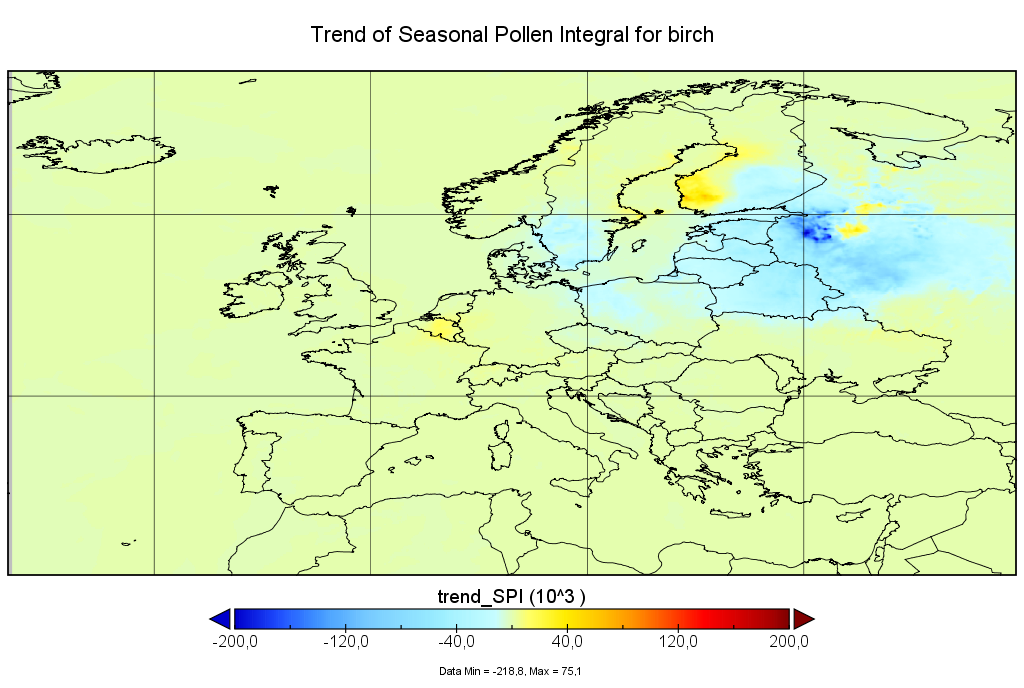Reanalysis reveals how allergenic pollen in the air has changed over the decades

To answer some of these questions, the Finnish Meteorological Institute has launched the European Pollen Reanalysis, covering the past four decades. The reanalysis brought together observation teams from 34 European countries, whose data were assimilated by the FMI's SILAM model.
“A retrospective assessment of allergenic pollen concentrations and their trends is important for understanding the epidemiology of pollen allergies, constructing exposure-response models, and ultimately helping people with allergies,” says the reanalysis’ principal investigator, Mikhail Sofiev, from the Finnish Meteorological Institute.
The amount of tree pollen has not increased everywhere in Europe
The first version of the reanalysis focused on allergenic trees: alder, birch, and olive. These trees bloom in the spring and in many parts of Europe, they start the allergy season. They are sensitive to rising temperatures, which means the flowering season now starts almost a month earlier than 40 years ago. However, the reanalysis showed that the amount of airborne pollen does not increase everywhere.
Trees generally follow a bi-annual cycle, meaning a high-pollen season is usually followed by a low-pollen season, and vice versa. This cycle, however, can be disrupted if spring and summer are particularly harsh (e.g., due to drought or heatwaves) or, on the contrary, if there is plenty of water and temperatures are favourable.
The reanalysis will help to understand these and other trends. Its first assessment made for the Lancet Countdown for Europe, largely confirmed the regional patterns of pollen abundance trends. More detailed studies and further expansions of the reanalysis are underway.
“We are at the beginning of a very interesting journey,” continues Mikhail Sofiev. “The multinational team that came together to make this reanalysis possible is preparing to continue the work, and the developed technology opens new possibilities. The next versions of the reanalysis will cover more species, which are also important for agriculture, forestry, climatologists, biodiversity scientists, and other users.”

Further information:
Mikhail Sofiev Research Professor, Dr. Finnish Meteorological Institute tel. +358 503 290 578 mikhail.sofiev@fmi.fi Norkko.fi: Pollen information service in Finland
Scientific articles:
Sofiev et al, (2024) European pollen reanalysis, 1980–2022, for alder, birch, and olive. NatureScientific Data, 11, 1082. https://doi.org/10.1038/s41597-024-03686-2
Van Daalen et al, (2024). The 2024 Europe report of the Lancet Countdown on health and climate change: unprecedented warming demands unprecedented action. The Lancet Public Health S2468266724000550. https://doi.org/10.1016/S2468-2667(24)00055-0
